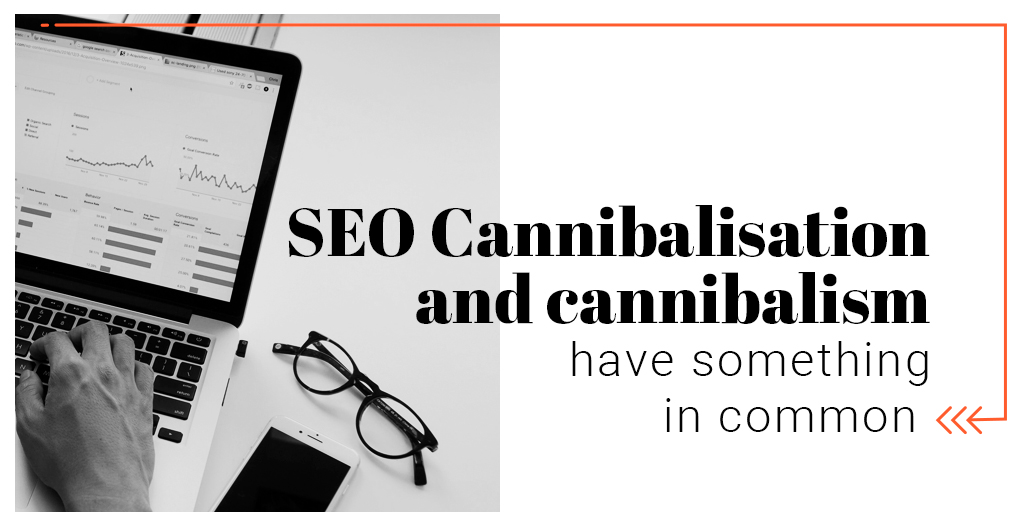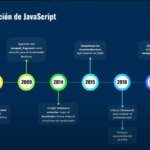
SEO cannibalisation and cannibalism have something in common
What is SEO cannibalisation and why can it ruin a project?
Although it sounds similar, cannibalisation should not be mistaken for cannibalism. Cannibalism is the act or practice of consuming another individual of the same species as food. Cannibalisation also eats the same species, but in this case, out of your own URLs trying to rank for the same keyword.
The word cannibalisation has many meanings, but specifically, in SEO terms, it is a concept that refers to the situation in which we try to position different URLs of our website with the same search intent or for the same search terms. Google considers your website as your own competitor on the results page because you are fighting with different URLs for the same keyword, i.e., eventually, you end up losing against your competitors because you are sending contradictory signals confusing Google. This way it fails to rank for that keyword. Less is more, as it is often the case in SEO, and could not have been defined better.
As we should not confuse cannibalisation with cannibalism, neither should we confuse cannibalisation with duplicity. Although the terms are often closely related, they are not the same thing. When we refer to duplicity, we refer to the percentage of similarity between several URLs at the content level. For example, we can have a list of clothes with the same content as another web, yet through meta tags and even the URL naming, they are oriented towards different search intentions. In this case, we would be dealing with internal duplicate content and not cannibalisation, if we get Google to understand that each URL responds to different searches.
How does cannibalisation affect a website and what types of cannibalisation can we find?
Just like duplicate content, cannibalisation will influence the authority and quality standards of your website, which will end up having an impact on visibility and organic traffic, since SEO increasingly goes hand in hand with user experience and cannibalisation also confuses the user.
When we try to rank for a keyword, we do so by competing with the rest of the websites that appear in Google’s SERP. However, if you have two or more URLs on your website trying to rank for the same term, your own website will become your biggest competitor. Google does not consider this a good practice, so the web will lower the position or disappear for that keyword, depending on the level of cannibalisation you have within your domain.
Cannibalisation will cause Google to misunderstand which URL is the most important for a given keyword and which one you want to rank for, ranking the least important URL or none. Google may rank both URLs in the top positions if they offer useful content that the user expects to find. In this case, it would not be negative cannibalisation if the content is totally different between the two URLs providing relevant information.
We could have these URLs that are ranking for the search “model 1”:
- domain/phones/model1/
- domain/phones/model1-vs-model2/
Another example is what happens in the media when they have a Real Madrid page and a tag of the same team. In these cases, the contents are totally different and the title/h1 and internal linking are oriented to position them for different keywords such as “real madrid”, “real madrid team” or “real madrid news”.
It is particularly important to check for cannibalisation on any website and to have a well-defined project strategy when creating or modifying sections of a website. Whenever we want to add or modify a section on a website, we should first analyse whether we already have a URL that responds to the search for the new terms we want to add.
These types of SEO cannibalisations are the most common within a website:
- Cannibalisation between different product pages.
- Cannibalisations between product pages and ranges.
- Cannibalisations between product pages or ranges and informational landings.
- Cannibalisations between blog articles and e-commerce sections.
- Cannibalisations between different blog posts.
- Cannibalisations between categories and tags in a blog.
- Cannibalisations between categories/tags and blog articles.
As I mentioned before, cannibalisation can also be negative for the user and therefore end up affecting your website, as you may be showing duplicate content, generating confusion, content that is not the desired or does not define the keyword well, thus causing an increase in the bounce rate on your website. It will also generate ranking movements in the SERPs, affecting both your visibility and traffic.
How to detect SEO cannibalisation on my website?
It is important to understand that not all cannibalisation of the website can be considered negative, there are certain cases in which cannibalisation does not harm your website, for example:
- When there is cannibalisation by keywords that include your brand.
- When URLs that rank for the same keyword are targeted and optimised to rank for different terms but end up satisfying the user.
However, in cases where cannibalisation is really penalising your website, it is crucial to detect it. We must find this cannibalisation and we can use tools or more basic ways that I will describe below:
- The internal search bar on your own website. Any search will bring up all the results associated with that keyword on your website, so it is one way to detect if you have this cannibalisation problem, although it is not the quickest and fastest way to do it.
- Proper CMS. If we have access, we can filter by page headlines and detect possible cannibalisation between the URLs displayed on the CMS.
- Basic Google commands. We can also use the Google search engine to detect this cannibalisation. Using the command “site:” + the keyword we want to analyse, we can further refine our analysis on Google, which will bring up all the indexed results associated with our website for the keyword we have detected. We can also use the combination of other commands such as “site:” + “intitle:” or “site:” + “inurl:” or even using the “-” symbol to remove parts of the website such as the blog or the corporate website if we have several sections within the domain.
- Google Search Console: It will allow us to find out how many URLs a keyword is ranking for or if you suspect that two URLs are ranking for the same keyword.
For the fourth option:
1.Go to Search Console and click on “Search results”.
2.Click on “Query” and enter the keyword that is detected as cannibalised or the one you suspect. We can also click directly on any keyword that SC shows as cannibalised.
3.Then click on the “Pages” section to show you the URLs for which the selected keyword is ranking.
In case there is any suspicion that two URLs are ranking for and targeting the same keyword:
1.Include a filter, select “Compare”, and enter the two URLs for which you suspect cannibalisation.
2.The comparison of the two URLs could be downloaded as an Excel file.
3.Open Excel by applying the “Conditional Formatting” -> “Rules for highlighting cells” -> “Duplicate values”, you will get all the duplicate keywords, i.e., the ones for which these URLs rank.
As we have seen in previous cases, it is a way to confirm that you have cannibalisation within the website, but it is not the most agile procedure to detect and remove all the cannibalisation from the website. Also, this way of detection and its effectiveness will depend on the size of the project and the website being analysed.
- Making Sistrix useful: If you have contracted the Sistrix tool, you can use it to detect cannibalisation more quickly.
The steps to follow are:
1.Enter the domain of your website or the one you want to analyse.
2.Select “Keywords” from the menu on the left.
3.Click on “Filter” and add the “Show keyword cannibalisation” filter.
4.The tool will display a table, in which we will have to look at the column “Number of URLs” to find out how many URLs are associated with a keyword. Therefore, we will be able to know quickly and easily how many URLs are associated with the keywords of the domain we have analysed, i.e., the cannibalisation found within that website.
How to solve SEO cannibalisation on my website?
A clear strategy is needed to solve cannibalisation on any website beforehand. As we have seen, the important thing to avoid cannibalisation is for a single URL to rank for a single keyword. Therefore, the steps to be taken are the following:
1.Identify first which URLs we want to maintain and which keywords we want them to rank for.
2.Make the most of the valid content of the URLs that we are going to reuse to improve the URL to be optimised and that we intend to position, making it as attractive and powerful as possible in terms of content and on-page optimisation.
With all this in mind, we can proceed in several ways to solve the cannibalisation problem:
1.Remove URLs that cannibalise the URL we want to keep.
2.Redirect the URLs that cannibalise to the one we have chosen and want to position using a 301 redirect, thus transmitting the potential of these URLs to the final URL. This way we avoid generating URLs that produce 404 errors and if we have previously detected that there was cannibalisation, we will almost certainly not generate any type of “soft 404” when carrying out the redirection.
3.Use the canonical tag. Although the canonical tag is a Google directive, they are tags that function as indicators that the relevant and important content is what is indicated in it. This way we can keep all the URLs and although some may have the same content-generating duplicity, we are protected from a penalty. The problem is that this tag does not transfer the potential or authority of one URL to another and Google can maintain both indexed and even position the URL we are not interested in.
4.Deindex the URLs we have detected that cannibalise using the noindex tag.
5.Before making any of these decisions to eliminate cannibalisation, we can play a much more interesting card and that is to orientate one of the URLs to attack a different keyword, if the pages do not duplicate the content, of course. We could keep both URLs and position them for similar and different terms at the same time (synonyms or a long tail variant of the main keyword, for example).
Once the cannibalisation is removed, the internal linking that we had distributed among the rest of the cannibalising URLs, we should modify them to point to the URL that we want to position, as well as to avoid sending those URLs that we no longer want Google to consider via the sitemap.
How to solve cannibalisation between your own domains?
Is it possible to rank two of your own domains that have the same type of business “for the same keywords” and without stepping on each other’s toes? To this, the answer is yes, it is possible. As we have seen before, there are techniques where two URLs that are positioning for the same keyword can coexist without causing damage to each other. In addition to the problem that 2 URLs (from different domains) are positioning for the same keyword, and often the domain that you are not interested in appearing first is above them, there is also the issue that both domains may have the same design, the same IP, and the same URL parameters.
Google assumes that two domains are the same if they share URL settings and use shared hosting, i.e., same, or similar IP. Moreover, if both domains have the same design, it becomes even more complicated. In the case of having two domains that are so similar in terms of content and design, we should try to focus one of them on long-tail terms, for example. For e-commerce, choosing “buy + category + online” could be a good idea and the other domain would try to position only for the keyword of the category itself. Besides, you can include optimised texts through headings, at least in one of the two domains (I would choose the one that is going to rank for the category itself) and ideally, little by little, adding it to the domain that is oriented to long-tail, having a different URL configuration, that is, a hierarchy differentiated from the other domain and even, if possible, attacking different keywords, either synonym of the other domain or its variants. Even if we focus the domain on long-tail through meta tags, many internal links will probably continue to point to the exact anchor text and therefore, Google will continue to see certain signals that we want that domain to also position for the category and will continue to cannibalise the main domain, which we do want to position for the exact keywords in the hierarchy.
Before I finish, I would like to thank Claudia Pardo for the time she has dedicated to gathering information and helping me with the focus of the post. This article would not be so complete without her help… As always, she is so dedicated and willing to collaborate.
Artículos relacionados
Loren Valero
Latest posts by Loren Valero (see all)
- SEO cannibalisation and cannibalism have something in common - 22 July, 2020
- SEO Strategies: Long-tails can save your website - 8 January, 2018
- Google to Punish the Use of PopUps and Interstitials Starting in January 2017 - 13 December, 2016






